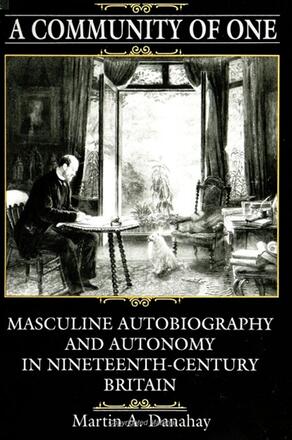
A Community of One
Masculine Autobiography and Autonomy in Nineteenth-Century Britain
Alternative formats available from:
Description
Complementing recent feminist studies of female self-representation, this book examines the dynamics of masculine self-representation in nineteenth-century British literature. Arguing that the category "autobiography" was a product of nineteenth-century individualism, the author analyzes the dependence of the nineteenth-century masculine subject on autonomy or self-naming as the prerequisite for the composition of a life history. The masculine autobiographer achieves this autonomy by using a feminized other as a metaphorical mirror for the self.
The feminized other in these texts represents the social cost of masculine autobiography. Authors from Wordsworth to Arnold, including Samuel Taylor Coleridge, Thomas De Quincey, John Ruskin, Alfred Tennyson, Robert Louis Stevenson, John Stuart Mill, and Edmund Gosse, use female lovers and family members as symbols for the community with which they feel they have lost contact. In the theoretical introduction, the author argues that these texts actually privilege the autonomous self over the images of community they ostensibly value, creating in the process a self-enclosed and self-referential "community of one."
Reviews
"Danahay explains links among Romantic and Victorian autobiographers that have up to now gone unnoticed. He covers a wide range of works and mounts a sophisticated theoretical critique of the autobiographies' concern with self vs. other. Also, he makes good use of ideas outside the field of autobiography studies, which show how his concerns and those of the writers he treats fit in with general intellectual history." — Thomas R. Smith, Pennsylvania State University